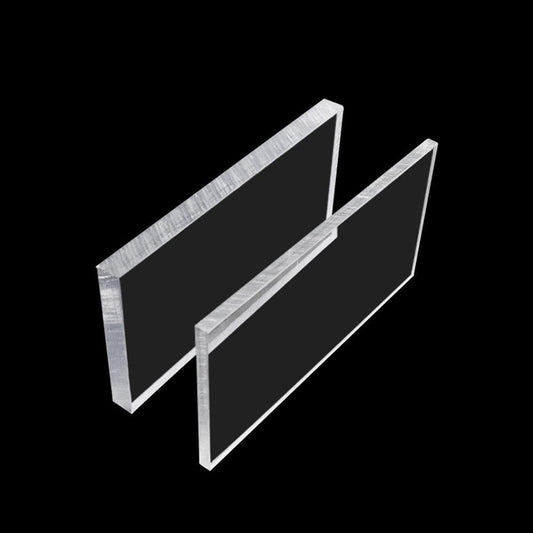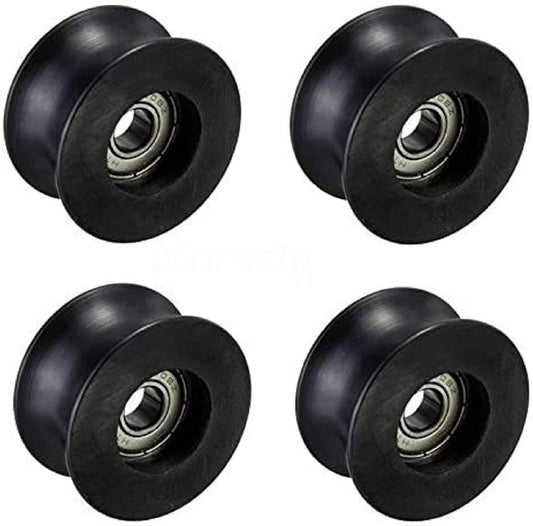ABS plastic is one of the most ubiquitous and versatile thermoplastics across countless industrial and consumer applications. From automotive trim to appliance housings, ABS offers useful properties like impact resistance, durability, and ease of fabrication at an affordable price point. However, to maximize the lifetime and appearance of ABS plastic items, proper maintenance and care is required. This guide will provide tips on cleaning, polishing, preventing damage, conducting repairs, and restoring ABS components.

What is ABS Plastic?
ABS stands for acrylonitrile butadiene styrene, referring to the three monomers used to synthesize this widely used amorphous thermoplastic polymer. It provides characteristics intermediate between rigid, brittle plastics and soft, pliable plastics:
- Impact resistance - ABS absorbs and dissipates shocks and blows, preventing cracks and fractures better than more rigid plastics.
- Toughness - The chemical structure of ABS imparts high durability and resistance to scratching, gouging, and abrasion.
- Temperature resistance - While not suitable for extreme heat applications, ABS retains stiffness and strength in temperatures ranging from -20°C to 80°C.
- Easy processing - ABS can be readily injection molded, extruded, machined, and thermoformed using conventional plastic fabrication techniques.
- Aesthetics - The glossy finish and ability to be easily colored and painted make ABS a popular choice for consumer products.
- Affordability - Mass production keeps costs lower than engineering plastics while still providing useful material properties.
These characteristics make ABS ideal for diverse applications from consumer goods to automotive components to medical devices and beyond. However, proper care and maintenance is crucial to ensuring long-term performance.

ABS Plastic Care and Maintenance
With occasional cleaning and polishing along with preventative steps to avoid damage, ABS plastic items can maintain their appearance and function for many years of use. Here are some tips for keeping ABS possessions looking their best:
Cleaning ABS Plastic
- Use mild soap and water to wipe down ABS plastic surfaces. Avoid harsh chemicals that could interact with the material.
- For tough grease or grime buildup, isopropyl alcohol effectively cleans ABS without risk of damage.
- Compressed air blows away dust in hard to reach crevices and vents in ABS components.
- When using any solvents or cleaners, first check manufacturer guidance for ABS plastic to avoid cracking or hazing.
Regular light cleaning prevents buildup of dirt and contamination and also makes polishing easier.

Polishing Out ABS Scratches
While ABS stands up to scratches better than soft plastics, it can still pick up light surface mars and scuffs over time. To remove minor ABS plastic scratches:
- Clean the area thoroughly then use a plastic polish product with a microfiber cloth, buffing by hand.
- For deeper gouges, try a more heavy duty plastic scratch remover along with a power buffer. This will smooth the surface by removing a thin top layer.
- Replace badly scratched or worn ABS parts. Heavy polishing can only do so much to restore optical clarity.
Proper polishing removes light scuffs and scratches, restoring the desired glossy finish of ABS plastic products.

Preventing ABS Plastic Yellowing
ABS tends to yellow and fade when exposed to the ultraviolet rays of sunlight. To prevent ABS plastic discoloration:
- Apply protective UV inhibiting sealants to transparent or light colored exterior ABS components. Reapply yearly.
- Avoid leaving ABS products in direct sunlight for prolonged periods. Periodically rotate display merchandise.
- When possible, choose ABS formulations that incorporate UV blocking additives. Automotive window tint can also help.
- Keep spare or stored ABS parts covered to prevent UV exposure. A cool, dark place is ideal.
With proper precautions against UV exposure, even decades old ABS plastic items can maintain their original color instead of taking on a faded, yellowed appearance.

Lubricating ABS Plastic Parts
ABS components are often integrated into moving assemblies like hinges, latches, and sliding joints. To prevent premature wear and noise:
- Use light mineral oil or dry PTFE spray lubricants to reduce friction on ABS plastic moving parts.
- Penetrating lubricants help free up "dry" moving connections in old, dirty ABS mechanisms.
- Avoid grease or graphite lubricants which can attract contaminants over time.
- Check manufacturer guidelines for proper lubricants for plastic/metal assemblies.
Proper lubrication of any moving ABS parts extends service life while preventing annoying squeaks and sticking.
Fixing Common ABS Plastic Issues
Even with responsible care, ABS can still suffer various types of damage through regular use and age. Thankfully, many common ABS plastic issues can be repaired with simple DIY techniques.
Tightening Loose ABS Joints
Over time, cyclic loading can cause ABS press fits, snap joints, and screw connections to loosen. To tighten:
- Clean joint then use plastic-safe threadlocker, super glue, or solvent cement on screws and press fits. Avoid super glues that can crack ABS.

- When re-tightening screws into ABS, use care to avoid stripping the holes. Shims can take up slop in worn press fits.
- For severe loosening, drill small pins through joints or add additional fasteners for reinforcement.
Promptly fixing loose ABS connections prevents further damage like cracks and fractures.
Repairing Cracked ABS Plastic
While ABS is impact resistant, cracks can still develop through excessive loading, environmental exposure, solvent damage, and material defects. To fix cracks:
- Sand the area to create fresh bonding surfaces then thoroughly clean with isopropyl alcohol.
- Use ABS solvent cement or specialized plastic welding rods to fuse cracked sections back together. Clamp until the adhesive fully cures.
- Small cracks can also be drilled at the ends to halt spreading, then filled with ABS epoxy.
- Severe cracks may require professional help or reinforcement with pins, bolts, or fiberglass.
Repairing cracks in ABS prevents part failures down the road. But badly cracked components may need replacement.
Removing Stains from ABS Plastic
Spilled chemicals, dye transfer, mineral deposits, and other contaminants can stubbornly stain ABS plastic. To remove stains:
- Try gentle cleaners like diluted bleach, vinegar, or rubbing alcohol on ABS, testing first in an inconspicuous spot.
- "Magic eraser" cleaning pads work well for scuff marks and surface discoloration on textured ABS.
- Refinish badly stained components with paint or replacement ABS parts if stains resist removal. Harsh chemicals risk additional damage.

- Cover nearby ABS plastic when spraying chemicals or using dyes to help prevent stains in the first place.
ABS and other plastics are prone to stubborn staining, so gentleness and prevention are key.
Preventing Rust on Internal ABS Metal Parts
Many ABS plastic products contain embedded steel components or hardware which can eventually rust, especially if the item gets wet. To prevent corrosion inside ABS:
- Thoroughly dry any exposed metals if the interior gets wet. Look for standing water in tight spaces.
- Coat exposed fastener heads or unfinished metal edges with clear nail polish or specialty anti-rust products.
- When possible, choose stainless steel or zinc plated hardware when metal will contact ABS to help resist rust.
- Periodically inspect internal metals components during routine maintenance. Address any rust promptly before major damage occurs.
Catching and preventing rust formation preserves both aesthetics as well as proper functioning of ABS assemblies.
Restoring Severely Damaged ABS Plastic
Heavily weathered or degraded ABS plastics often require more extensive renovation. Several options exist for restoring severely damaged ABS to near original condition.
Painting ABS Plastic
A fresh coat of paint commonly restores the appearance of faded, yellowed exterior ABS plastic products.
- Lightly sand and degloss the ABS surface, then properly prime before applying paint. Use thin coats to prevent drips and runs.
- For outdoor use, high quality automotive paint resists sun exposure. Follow all manufacturer curing instructions.
- Specialty ABS plastic paints bond directly to the substrate instead of just coating the surface.
Properly prepped and painted ABS often looks as good as new again, even after decades of use.

Professional ABS Restoration Services
For valuable antique or specialty ABS requiring meticulous repair, professional restoration services may be justified. Experts can provide:
- Full disassembly, cleaning, and polishing of complex ABS assemblies.
- Color-matched dyeing or retinting to restore ABS plastic to original coloring.
- Fabricating replacement ABS components by machining, bonding, or reforming.
- Structural reinforcement, missing section repair, and cracks/puncture patching.
While expensive, these professional services revive cherished ABS possessions beyond DIY repair capabilities.
Replacing Damaged ABS Parts
If ABS plastic damage is too severe, components are unavailable, or degradation is extreme, replacement may be the only option.
- Source new or reproduction ABS parts from specialty suppliers supporting older products.
- Fabricate replacements yourself from raw ABS sheet and rod stock via machining, 3D printing, or thermoforming.
- Replace entire ABS assemblies with new versions if suppliers offer full plastic component upgrades.
While daunting, finding replacement ABS plastic restores function and appearance when repairs are impractical.
DIY ABS Plastic Repairs
Many minor ABS repairs are straightforward enough for DIY completion with proper care:
- Practice techniques first on inconspicuous ABS areas to optimize procedures.
- Follow all safety precautions when cutting, sanding, or spraying ABS plastics.
- Closely adhere to manufacturer instructions for repair products like cements, epoxies, and paints.
- Ensure ABS surfaces are completely clean before bonding or painting.
- Dry fit ABS replacement parts prior to permanent attachment.
- Work slowly and test fit frequently when modifying or repairing ABS components.
- Properly prime and prep ABS prior to painting for professional looking results.
With some care and patience, many common ABS plastic fixes can be tackled without professional help.
Care for Your Valuable ABS Plastics
ABS remains one of the most ubiquitous thermoplastics due to its excellent balance of mechanical properties, chemical resistance, and affordability. But like any material, proper maintenance is key to maximizing the lifetime and appearance of ABS plastic items.
Through responsible cleaning, polishing, preventative steps, and timely repairs, products fabricated from acrylonitrile butadiene styrene can maintain their as-new look and performance for decades. While ABS is inherently tough and impact resistant, it still benefits greatly from basic care to avoid degradation.
In cases where damage does occur, relatively simple DIY techniques can often restore ABS to near original condition. More extensive professional restoration is also an option for treasured ABS pieces suffering from advanced UV damage, discoloration, or other flaws.
By leveraging these ABS plastic care and maintenance tips, consumers can keep even inexpensive ABS items looking pristine while extending service life. So be sure to properly care for your valuable ABS possessions - a little effort goes a long way!







